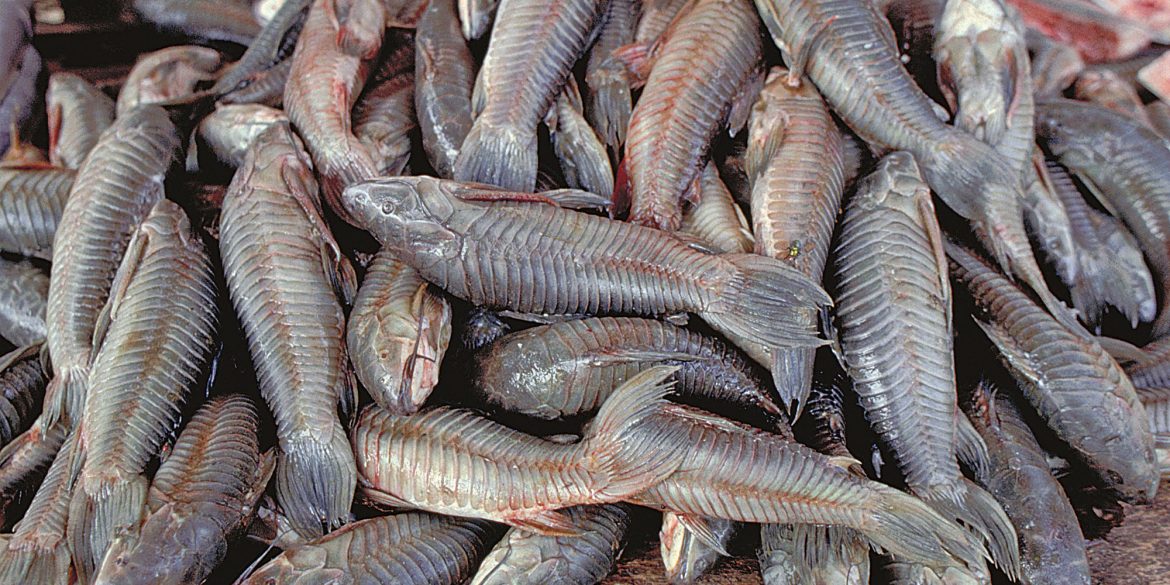
Length Category: Small (<40 cm)
Trophic Level: Detritivore
Migratory Pattern: Local (<100 km)
Spawning Period: Low + Rising
Export Market: International (outside South America)
Market Status: Third class
Catch Distribution:
Tamoatá potential yield was estimated to be 1,110 tons. Tamoatá yield is concentrated in the Estuary, which represents 78% of the total, followed by the Tocantins (14%) and Lower Amazon (7%) regions.
Natural History Notes:
Tamoatá is a detritivore that is abundant in the shallow lakes of eastern Marajó and also in many floodplain lakes. The armored catfish builds a floating nest that it uses to protect its eggs. The tamoatá does not migrate and has an air-breathing accessory organ in the lower intestine that allows it to live in swamps and other environments with low oxygen levels. It feeds mostly on small arthropods and worms. The largest tamoatá fisheries are in the savanna lakes of Marajó Island. Tamoatá catches have decreased in the last decade or so and some restrictions have been attempted to prevent overexploitation. The main restriction has been a closed season during the rising water period when it spawns.
| Brazil | |
| Tamoatá | Hoplosternum littorale |
| Tamuatá | Hoplosternum littorale |
| Peru | |
| Shiruí | Hoplosternum littorale |

